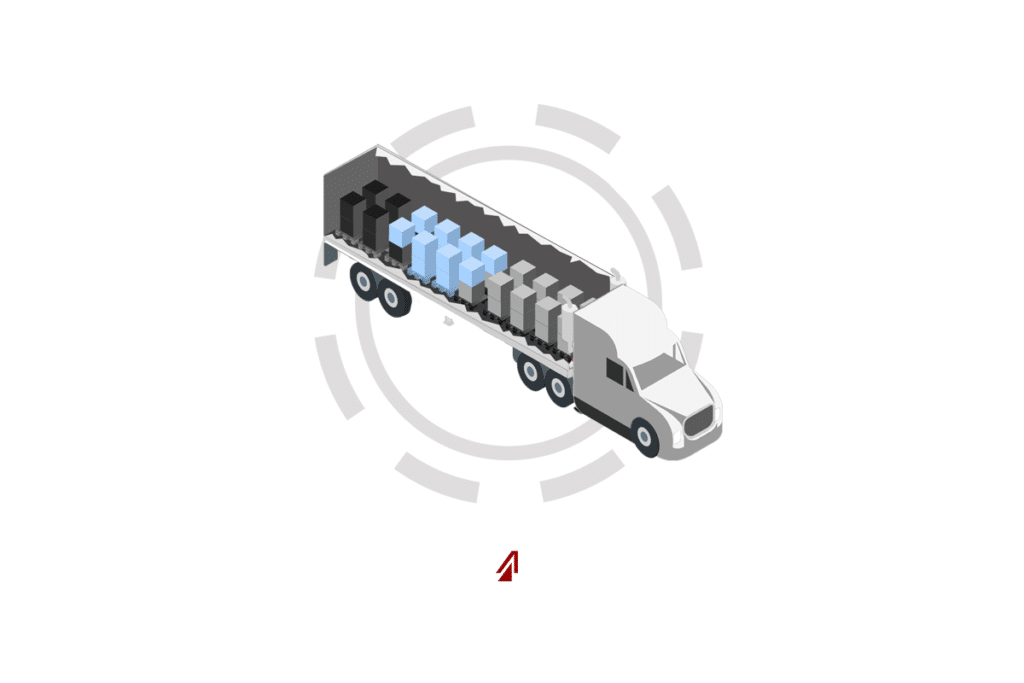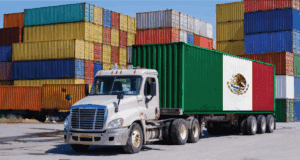One of the worst things companies can do is to sabotage themselves on shipping costs. Many companies are overpaying for their shipping because they ship small amounts of non-critical freight on large trucks without fully utilizing the space. Companies do not have to waste their shipping dollars on empty trailers though. They can save money by shipping their LTL freight consolidated. This shipment method has some significant advantages that prevent many companies from wasting their shipping dollars.
What is LTL? Consolidation?
LTL stands for “Less than Truckload” or “Less than Load” meaning freight that would not fill an entire 53 ft dry van. Most often, these shipments are relatively small loads weighing between 150 and 15,000 pounds. Freight is also designated into certain classes and is differentiated by size and density. Many customers significantly overspend on their supply chains by shipping these loads in a full truckload. Even if they only use a small portion of the available space, they pay for the entire trailer.
For instance: recent quotes for two class 50 pallets, weighing 300 and 1000 pounds on a 53-foot dry van from Indianapolis IN to Laredo TX would each cost around $2000 according to DAT. Both pallets use the entire truck with no regard to space. Many companies would overpay for that service when they did not have to – this is where consolidation can help. That same pallets costing nearly $2000 to ship from Indianapolis to Laredo would only cost about $400 for the 300-pound pallet and $900 for the 1000 pound one if they were shipped consolidated.
Consolidated shipments work by combining partial loads from several shippers into a full truckload going to common destination. They work using a hub-and-spoke method where local carriers collect freight from multiple shippers and move that freight to a local consolidation center (spoke). Then freight going to the same destination region will travel on a full truckload to a distribution hub, and local carriers will make last mile deliveries.
Costs for consolidation loads, like most shipment types, can often vary based on several factors:
• Shipment origin/destination
• Packaging type
• Number of pieces
• Weight
• Freight Classification
• Special Handling Instructions
What are Consolidated Shipment’s Cost Advantages?
Consolidated shipping has many advantages, but one of the most prevalent is its cost. It is significantly cheaper to ship consolidated loads rather than full truckloads (especially if space is wasted) because with consolidated loads, shippers only pay for the space they need. They share the costs of an entire truck with multiple other shippers depending on the amount of space they use. This is ideal for smaller shippers that do not regularly ship full truckloads of freight or companies that ship smaller batches of freight more frequently. It creates economies of scale and makes shipping costs more efficient.
Another key cost advantage is its flexibility. Shippers can schedule shipments for same day or next day pickup depending on the provider but often allow for a large pickup window. This window allows carriers to pick up the freight as soon as they can rather than make them wait until a specified time. Appointments can cause hours of service conflicts and lead to other accessorial charges like detention or layovers.
Are There Cost Disadvantages to Consolidation?
Like most shipping systems, there is a trade-off for using consolidated shipping. The top three cost disadvantages for consolidation are shipping time, freight handling, and system complexity.
• Time – Consolidated shipping can take longer than a traditional expedite due to handling and processing requirements. The extra time it takes for these processes as well as for carriers to combine shipments to make a full load can cost money in downtime. Also, shippers could be concerned about causing a line down situation if the freight does not arrive by its deadline.
• Freight handling – Consolidated shipments receive more handling and processing than expedites. Freight will touch hands several times in the hub and spoke method, giving it more opportunities to be damaged. Damaged freight costs money.
• System complexity – Consolidation requires a network of customers, carriers, processing centers, and lanes to be in sync with one another to work properly. Also, with many specifications and restrictions placed on LTL freight, like weight, freight class, or deadline, these shipments require significantly more attention to detail to work together with other freight. It can be expensive for companies to dedicate resources to coordinate these complex systems.
How to Make Consolidation Work for Most Companies
The main cost disadvantages for consolidated shipping can present a large challenge to many companies. That is why partnering with a 3PL can make consolidation even more effective for shippers. 3PLs can help enhance consolidation shipping’s advantages and reduce its disadvantages.
Working with a 3PL can enhance consolidation’s advantages by offering deeper cost savings, making shipping more flexible, and providing more environmental solutions than a shipper could on their own. 3PLs work with the top carriers and can leverage them for better rates on shipments, meaning customers not only pay less for shipping LTL, but also benefit from negotiated price structure. 3PLs offer flexibility in scheduling and freight movement. Many are 24/7 and can schedule shipments online or over the phone at any time of day. Then 3PLs can plan the shipments directly.
3PLs can also diminish consolidation’s disadvantages. 3PLs can help speed up transit time by employing more workers to collect and process freight – often 24 hours a day. They also work with higher freight volumes bringing the individual cost per unit down. Also, with higher volumes, more freight can be paired for similar destinations more quickly. 3PLs can limit the number of touches freight receive as well. Working with a 3PL, especially those that operate their own consolidation center network, can limit the number of stops freight experiences and reduce damage. 3PLs are also equipped to handle the complexity of a consolidation network. They have systems of customers, carriers, processing centers, and lanes in place to move their customers’ freight efficiently and effectively. Freight characteristics are accounted for and shipments can be moved as soon as possible.
Despite shipping prices rising, companies can still save money on their supply chains. If they are shipping LTL shipments, an effective cost-savings measure is to ship their freight consolidated. Combining their shipments with others in single truckload, carriers can cut costs by only paying for what they use and offer flexibility to their shipments. If they partner with a 3PL, they can also help mitigate consolidation risks like extended shipping time, freight handling, or system complexity. These savings can dramatically reduce supply chain waste and prevent companies from sabotaging themselves.



